Summary of February 2020 ISA Meetings
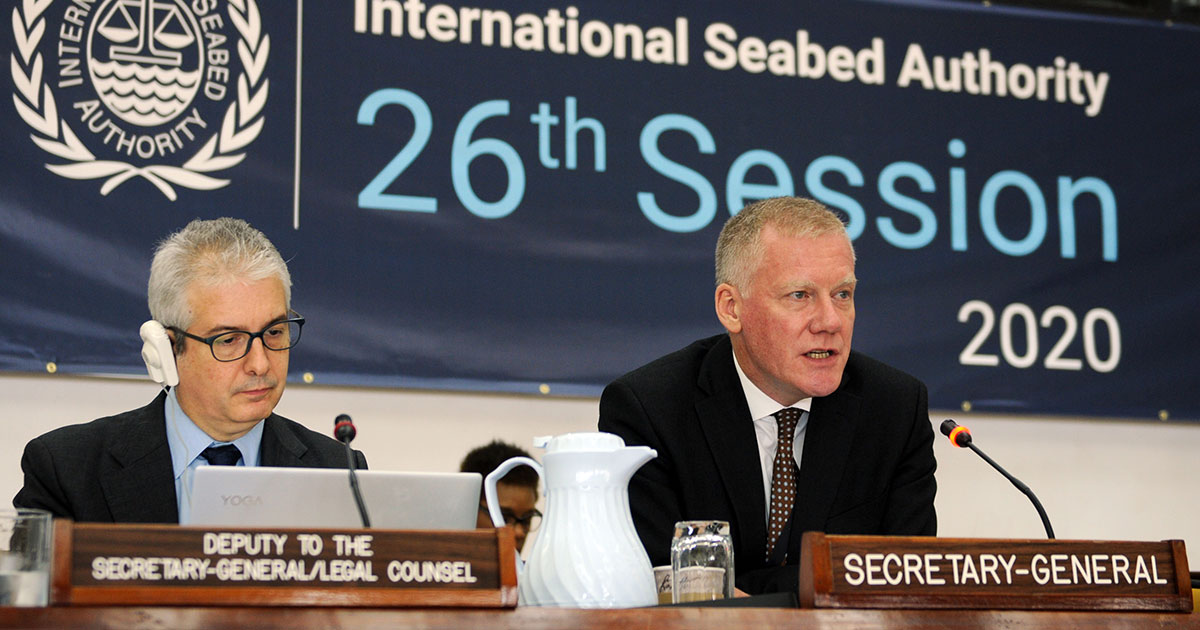
The following is a summary of the 1st Part of the 26th Annual Session of the International Seabed Authority (ISA), as compiled by IISD Reporting services:
At the first part of the 26th annual session of the International Seabed Authority (ISA-26), the Council’s substantive discussions focused on the draft regulations for the exploitation of mineral resources in the Area (the draft exploitation regulations). “The Area” is defined as the seabed and subsoil beyond the limits of national jurisdiction, and its “resources” as all solid, liquid, or gaseous mineral resources in situ in the Area at or beneath the seabed.
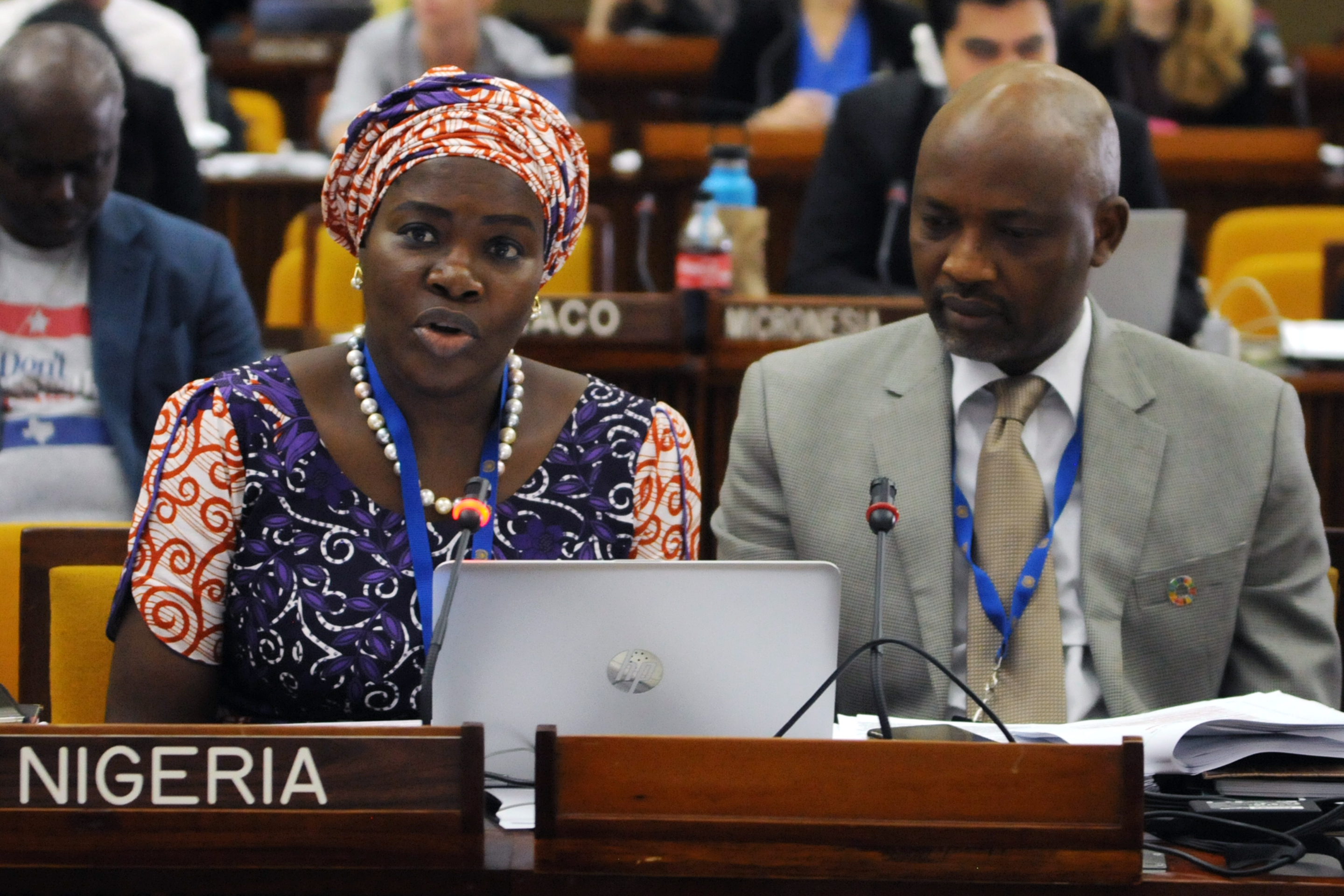 Coy Roache and Emmanuel Oguntuyi, Nigeria. Photo by IISD/ENB | Diego Noguera
Coy Roache and Emmanuel Oguntuyi, Nigeria. Photo by IISD/ENB | Diego Noguera
These regulations, once concluded, will govern future activities in the Area, and will need to ensure environmental protection while balancing stakeholders’ interests. Delegates engaged in discussions over new proposals on regional environmental management plans (REMPs), which ISA Secretary-General Michael Lodge described as “one of the most important work streams of the ISA over the last two years.”
They also discussed the financial model for mineral exploitation in the Area, agreeing to convene a fourth meeting of the Open-Ended Working Group (OEWG) to further this work.
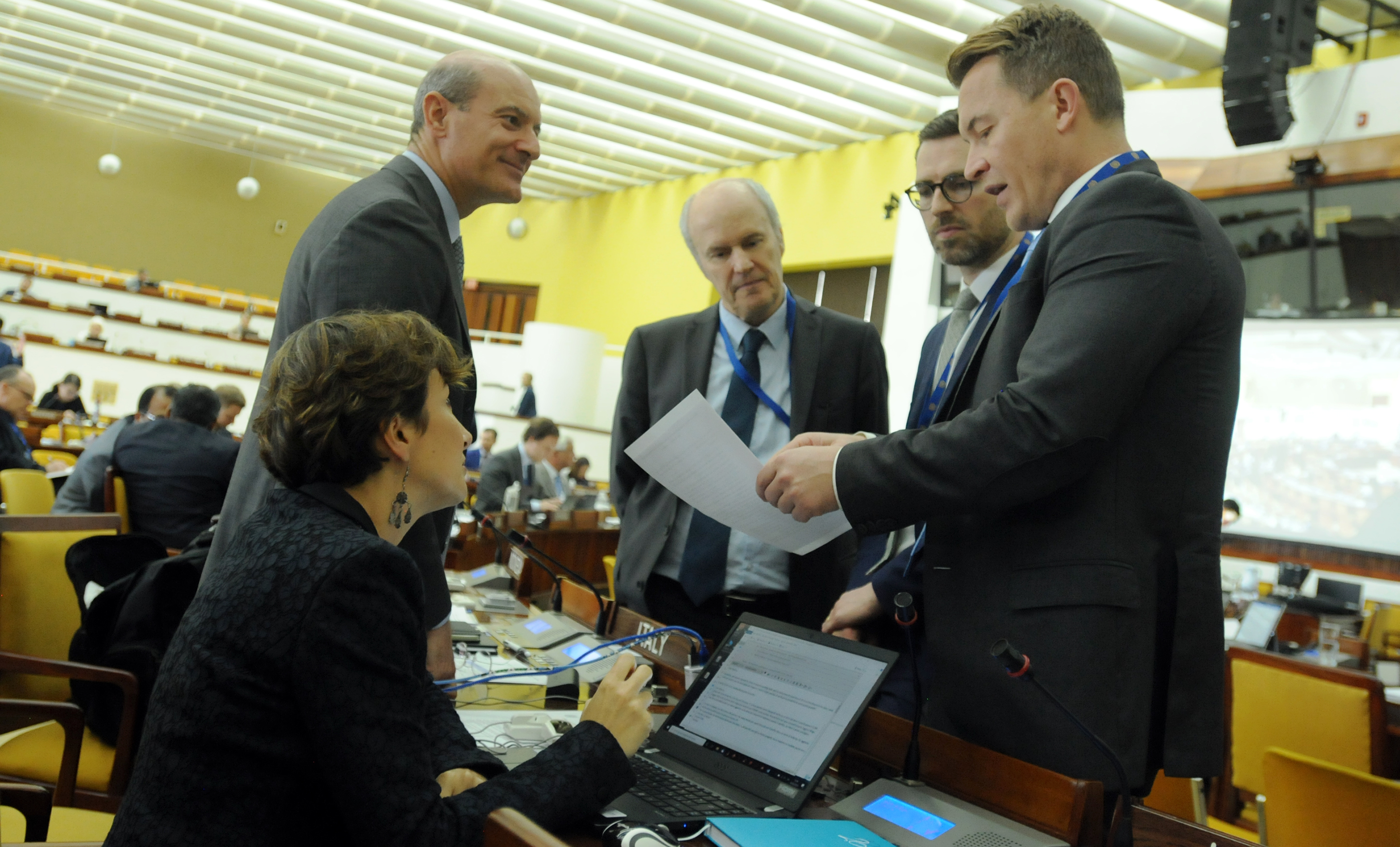 Delegates from Italy, France, and Norway discuss draft decision documents on the election of members of the Legal and Technical Commission (LTC). Photo by IISD/ENB | Diego Noguera
Delegates from Italy, France, and Norway discuss draft decision documents on the election of members of the Legal and Technical Commission (LTC). Photo by IISD/ENB | Diego Noguera
On Friday, the Council of the International Seabed Authority convened for the final day of the first part of its 26th session (ISA-26) in Kingston, Jamaica, finalizing its work. Delegates adopted a decision relating to the working method to address the draft exploitation regulations, agreeing to establish three informal working groups to address different thematic areas.
They also adopted a decision on a standardized approach for the development, approval, and review of Regional Environmental Management Plans (REMPs) in the Area, requesting the Legal and Technical Commission (LTC) to take into account the submissions tabled by Germany, the Netherlands, and Costa Rica on REMPs as they further develop the “Guidance to facilitate the development of REMPs,” currently under consideration by the Commission. The Council spent most of the day considering substantive matters, after a week dominated by procedural matters. For many, this was a welcome change as they delved back into the draft regulations, concluding a first reading of the sections on the protection and preservation of the marine environment, review and modification of a plan of work, and closure plans. In the afternoon, they also considered related annexes. In a brief statement on financial matters, ISA Secretary-General Michael Lodge appealed for contributions to the Voluntary Trust Fund to support the work of the Financial Committee and the LTC, and for support for the Voluntary Trust Fund for the Enterprise.
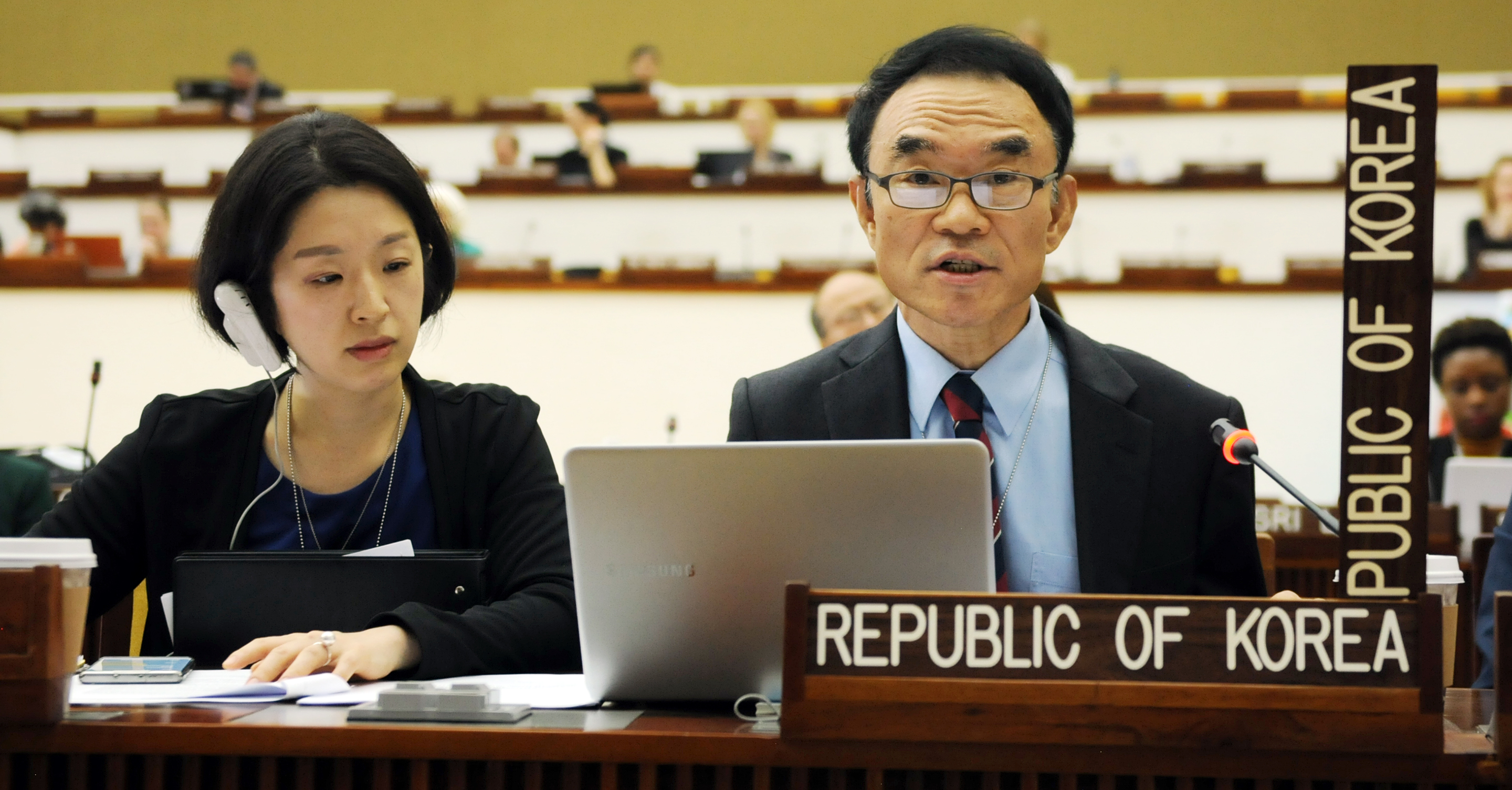 Seoyeon Cho and Young Lee, Republic of Korea. Photo by IISD/ENB | Diego Noguera
Seoyeon Cho and Young Lee, Republic of Korea. Photo by IISD/ENB | Diego Noguera
Highlights of the day included:
- the adoption of a decision on a standardized approach for REMPs;
- the adoption of a decision on the working method to guide work on the draft exploitation regulations;
- discussions on regulations related to the protection and preservation of the marine environment, the review and modification of a plan of work, and closure plans;
- and a discussion on an annex to the draft regulations on the elements of an environmental impact statement.
Thanking delegates for their hard work, Acting Council President Kathy-Ann Brown (Jamaica) closed the meeting at 4:41 pm.
On Thursday, the Council of the International Seabed Authority convened for the third day of the first part of its 26th session (ISA-26) in Kingston, Jamaica. Delegates discussed issues relating to the election of members of the Legal and Technical Commission (LTC), adopting a decision to work intersessionally on a resolution of the issue, for a final decision on the LTC elections to be taken at the second part of ISA-26. They also engaged in informal consultations on the working method to address the draft exploitation regulations, facilitated by Kenneth Wong (Canada), agreeing to consider a decision on this matter on Friday, 21 February.
Delegates also considered a draft decision on a standardized approach for the development, approval, and review of regional environmental management plans (REMPs) in the Area, agreeing to finalize the decision on the last day of the meeting.
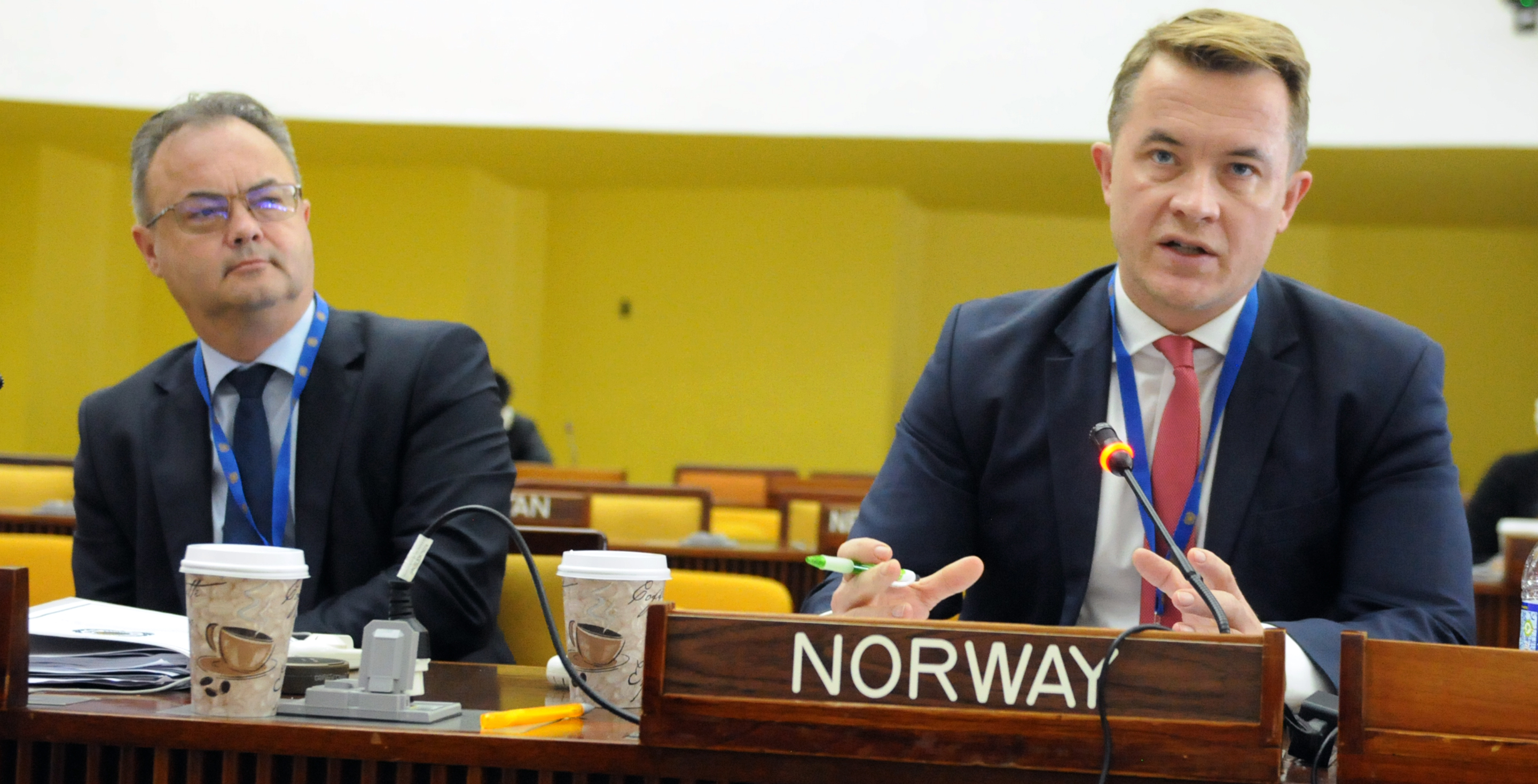 Olav Myklebust and Andreas Motzfeldt Kravik, Norway. Photo by IISD/ENB | Diego Noguera
Olav Myklebust and Andreas Motzfeldt Kravik, Norway. Photo by IISD/ENB | Diego Noguera
Thursday was a procedure-heavy day, with delegates working in informal groups and discussing sticking points in huddles around the conference center. Highlights of the day included:
- the conclusion of informal discussions related to the working method to address the draft exploitation regulations;
- the circulation of a draft decision related to REMPs;
- agreement on the way forward on issues related to the election of members of the LTC;
- an informal plenary session on draft exploitation regulations related to the protection and preservation of the marine environment.
At lunch, a side event was organized by the Deep Ocean Stewardship Initiative addressing the importance of biological diversity to deep seabed mining management.
On Wednesday, the Council of the International Seabed Authority convened for the third day of the first part of its 26th session (ISA-26) in Kingston, Jamaica. Delegates discussed aspects related to the draft exploitation regulations, specifically proposals related to regional environmental management plans (REMPs). The Council also discussed issues relating to the election of members of the Legal and Technical Commission (LTC).
In discussions on the former, delegates considered proposals tabled by Germany, the Netherlands, and Costa Rica on a procedure for the development, approval and review of REMPs, and on a standardized approach for REMPs. While welcoming the proposals, many raised concerns over the implications of the proposed procedure, particularly the role and mandate of a new expert committee to deal specifically with REMPs. They were also concerned about a perceived duplication of efforts, with several pointing out the fact that the LTC is already working to address this issue.
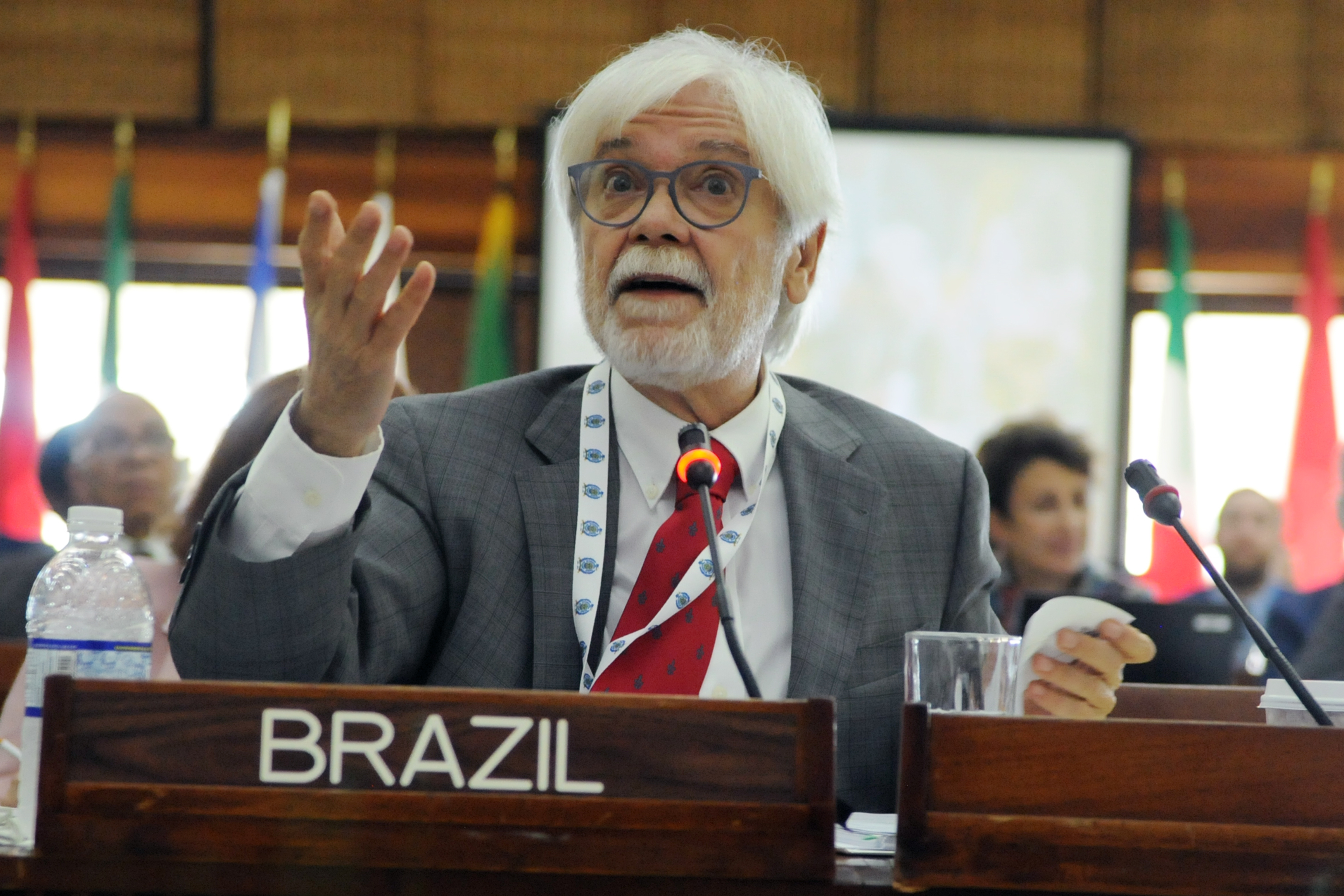 Carlos Alberto Michaelsen den Hartog, Brazil. Photo by IISD/ENB | Diego Noguera
Carlos Alberto Michaelsen den Hartog, Brazil. Photo by IISD/ENB | Diego Noguera
In the afternoon, discussions on the membership of the LTC took center stage. Vladislav Kurbatskiy (Russian Federation), who served as facilitator for the closed-door discussions on the issue, reported that the informal group could not agree on the issue of equitable geographical balance. Still unable to agree on this issue in the informal plenary, the meeting was suspended to allow for closed-door negotiations to resume. These consultations resulted in delegates agreeing to allow Facilitator Kurbatskiy to prepare a draft decision for consideration on Thursday morning.
Highlights of the day included:
- discussions on the development, approval and review of REMPs;
- discussions on a proposed template for REMPs; and
- extended informal and closed-door discussions on the composition of the LTC.
At lunchtime, a side event was organized by the Nauru Ocean Resources Inc. (NORI), titled “NORI Environmental Programme Update.”
On Tuesday, the first part of the 26th session of the Council of the International Seabed Authority (ISA-26) met for its second day in Kingston, Jamaica. Delegates started with a discussion of the report of the Open-Ended Working Group (OEWG) on the financial model. In interventions on the financial model, divergent views emerged on whether to focus on refining a subset of ad valorempayment mechanisms, or to continue consideration of all models, including profit-based options. There was broad agreement that more work is needed in the OEWG prior to the second part of ISA-26, with several encouraging increased participation.
Much of the day was taken up by extended procedural discussions regarding how to organize work on the draft exploitation regulations and whether to conduct this work in an informal setting in plenary or in a working group setting. Several lamented that the organization of the work was taking up valuable time that could be spent on substantive discussions. At the end of the day, delegates started the substantive discussion in an informal setting, providing detailed comments on the content of Part IV of the draft exploitation regulations, related to the protection and preservation of the marine environment.
Highlights of the day included:
- discussions on the report on the financial model;
- agreement on holding a fourth meeting of the OEWG on the financial model before the second part of ISA-26;
- informal discussions on how best to discuss, and make progress on, the draft exploitation regulations, including proposals related to the establishment of facilitated working groups, and remote intersessional work by Council members; and
- informal plenary discussions on Part IV of the draft exploitation regulations related to the protection and preservation of the marine environment.
At lunchtime, a side event was organized by the Pew Charitable Trusts under the title ‘Scientific Consideration for the Environmental Management of Inactive Polymetallic Sulfide Ecosystems.’
On Monday, the first part of the 26th session of the Council of the International Seabed Authority (ISA) opened in Kingston, Jamaica. After a halting start, Council members elected Taaniela Kula, Tonga, as President of ISA-26, before delving into discussions on key issues. The big discussion of the day centered around the composition and size of the Authority’s Legal and Technical Commission (LTC), an issue that has been controversial in the past. In plenary and in informal deliberations, views diverged on the role and importance of geographical representation vis-à-vis expertise, with many noting the need to balance the two. Others stressed that regional balance engenders trust and that the LTC should remain a body in which parties have confidence. Discussions on this issue will continue later in the week.
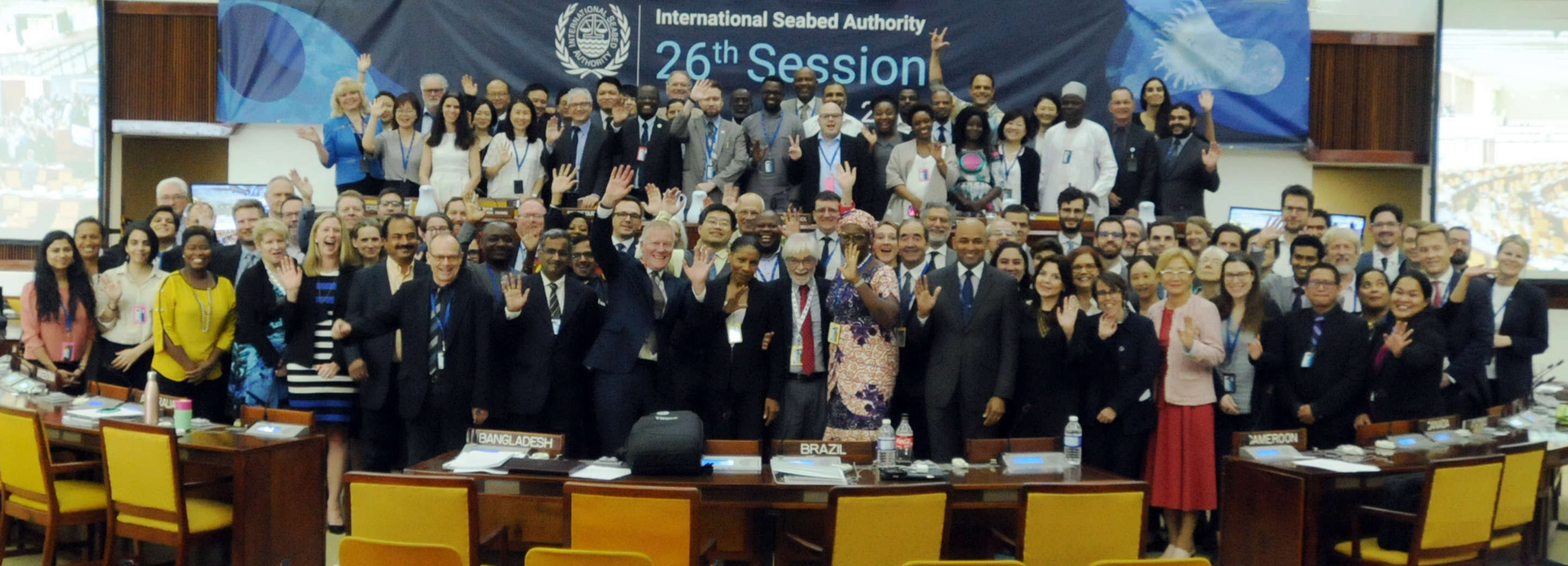 Group photo of delegates at the end of the 1st Part of ISA-26. Photo by IISD/ENB | Diego Noguera
Group photo of delegates at the end of the 1st Part of ISA-26. Photo by IISD/ENB | Diego Noguera
Highlights of the day included:
- the election of the ISA-26 bureau, comprising Nigeria, for the African Group; the Russian Federation, for the Eastern European Group; Jamaica, for the Latin American and Caribbean Group (GRULAC); and Canada, for the Western Europe and Others Group;
- formal and informal discussions relating to two proposals on the composition and size of the ISA’s LTC;
- the election of Carsten Rühlemann (Germany) to fill a vacancy on the LTC;
- comments on the implementation of the Council decision on the reports of the LTC Chair; and
- a report on the recently concluded meeting of the Open-Ended Working Group addressing the financial model related to the sharing of benefits of the exploitation of the Area.
At lunchtime, a side event was organized by Office of Environmental Management and Mineral Resources (OEMMR) of the ISA on the results of the Clarion-Clipperton Zone and Evora Workshops related to the review and development of Regional Environmental Management Plans in the Area.

